Based on the S1000RR
It was teased and now it’s official. the BMW M1000RR is a real-deal Bavarian track weapon. Based on the S1000RR, the M1000RR kicks off BMW’s M division motorcycles. The bike gets new aerodynamic wings and bumps the power up to 212 hp all while keeping weight down to a claimed 423 pounds.
The M1000RR looks a lot like the S1000RR, but everything is cranked up so that it can bury its sibling on the racetrack. The winglets to either side of the front fairing are made of clear-coat carbon fiber and help produce more downforce at speed. This keeps the front wheel down, letting you get the most traction possible.
BMW used WSBK riders Tom Sykes and Eugene Laverty and World Endurance racer Markus Reiterberger to test the new motorcycle. The M1000RR was ridden by Reiterberger who followed the WSBK riders on their racebikes. The M1000RR managed to hang just 2.101 seconds behind Sykes and 1.590 seconds behind Laverty during testing.
The bike has a 999cc liquid-cooled inline four-cylinder engine with ShiftCam technology. The M-model gets new two-ring pistons from Mahle. These are .4 ounces lighter than the S1000RR’s pistons. The connecting rods in the new engine are titanium from Pankl. This increases the compression ratio to 13.5:1 from 13.3:1 and increases the maximum rpm to 15,100. The M1000RR also gets a new exhaust valve spring assembly and slimmer and lighter rocker arms.
All told, the engine makes 212 hp at 14,500 rpm. Torque is 83.3 lb-ft. This is the same as the S1000RR, but it hits 500 rpm later at 11,000 rpm. The company added a tooth to the sprocket to help compensate for this. BMW also added a new titanium exhaust. This exhaust weighs 17.2 pounds compared to the S1000RR’s exhaust that weighs 25.2 pounds.
The M1000RR also gets an anti-hopping clutch for better launches. The bike also gets four standard ride modes (Rain, Road, Dynamic, and Race) and three configurable Race Pro modes. The bike also has a pit lane limiter mode, Hill Start Control Pro, and BMW’s shift assisting pro (clutchless upshifts and downshifts). The shift pattern can also be altered to a first-gear-up pattern for racing use.
The chassis was adjusted too. The M1000RR’s setting head angle is flatter than the S1000RR. The fork bridge offset was reduced a bit. This results in a 23.6-degree rake and 3.9-inches trail. The wheelbase is 57.4 inches (slightly longer). The rear suspension is a monoshock with fine-tuned adjustment. At the front is a 45mm inverted fork. The fork uses milled bridges made from solid aluminum. The brakes are M-branded calipers developed by the company’s WSBK program. They’re Nissin brakes that have been modified and made lighter. There are dual 320mm rotors up-front, and in the rear, there’s a 220mm rotor.
The bike also gets carbon fiber wheels that are 3.7 pounds lighter than the S1000RR’s aluminum wheels. This makes the bike a full 11 pounds lighter overall.
Add to all this some packages from the M-division. You can add the M competition package that adds a GPS-powered lap trigger, silver anodized aluminum swingarm, the fancy maintenance-free chain, and a passenger seat and pegs with a seat cover. There’s also the M billet pack that includes upgraded levers, footpegs, engine protection, and brake lever guard. There’s also an M carbon package that adds lots of carbon fiber to the bike.
U.S. pricing hasn’t been confirmed but BMW Canada has priced the bike at CA$42,400, which is about US$31,830, according to Motorcycle.com.

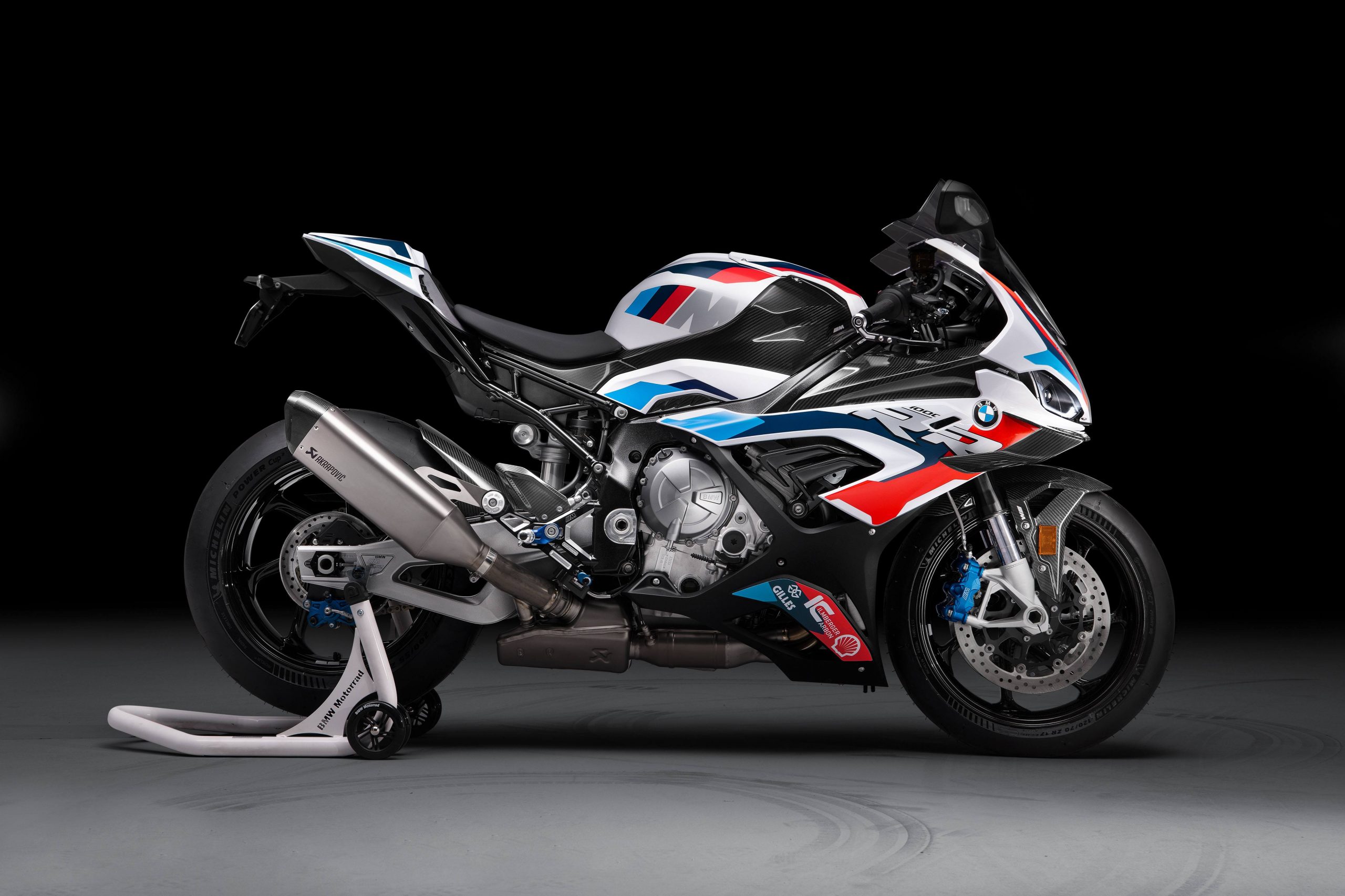
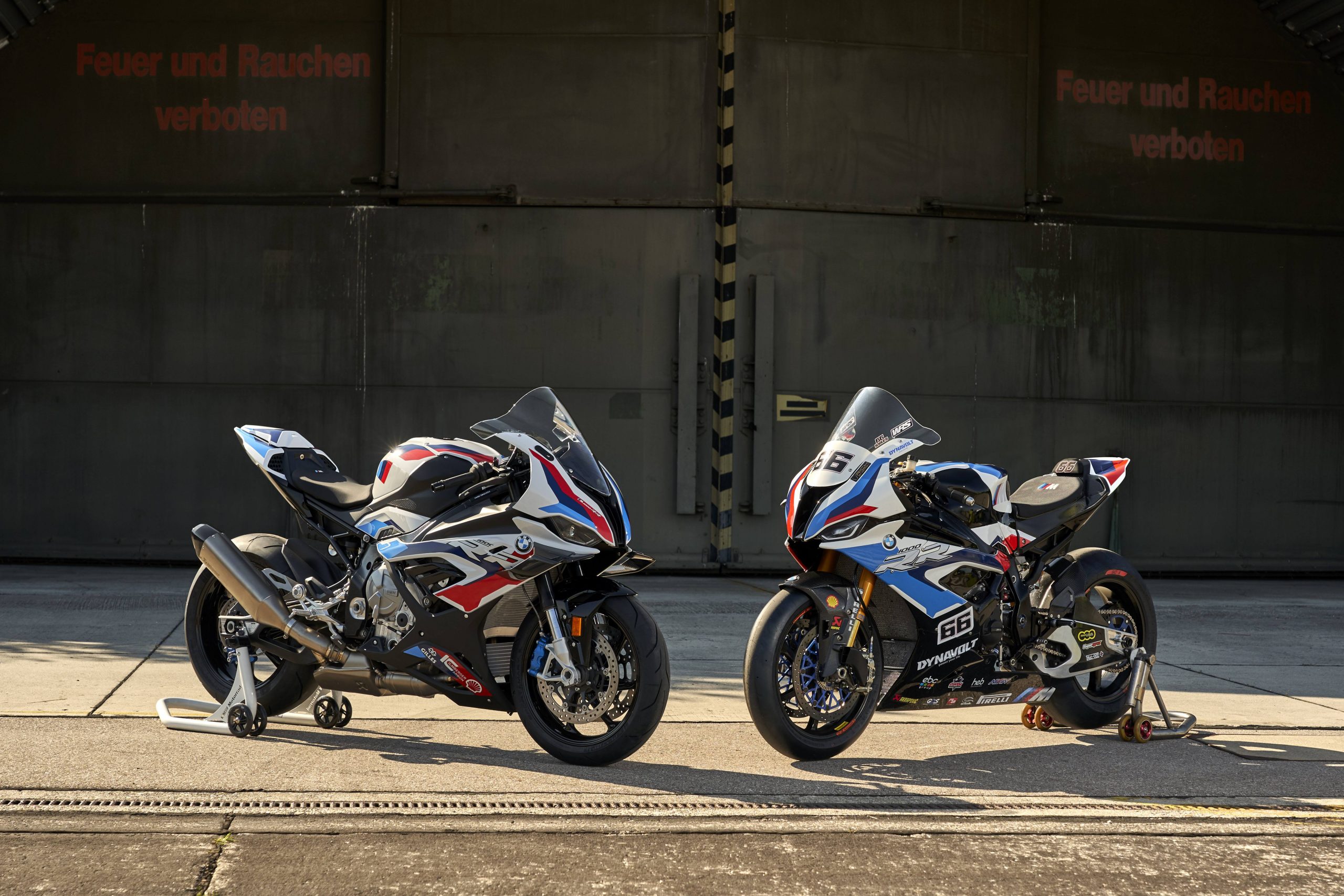
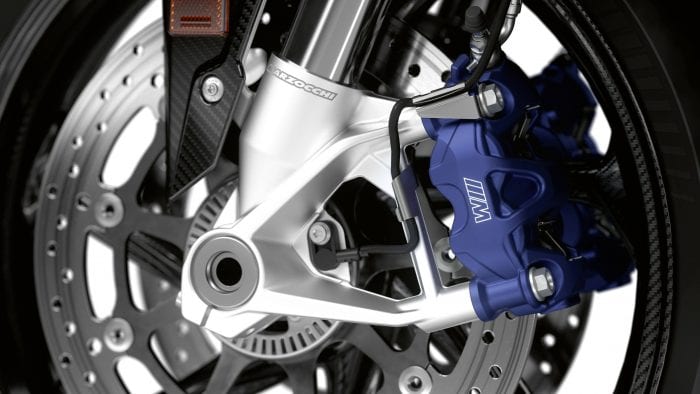
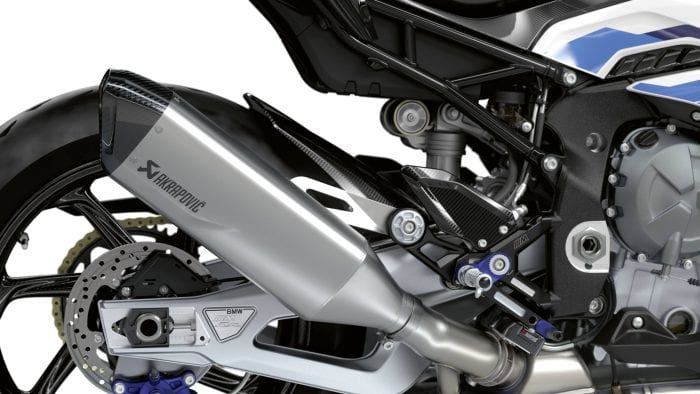
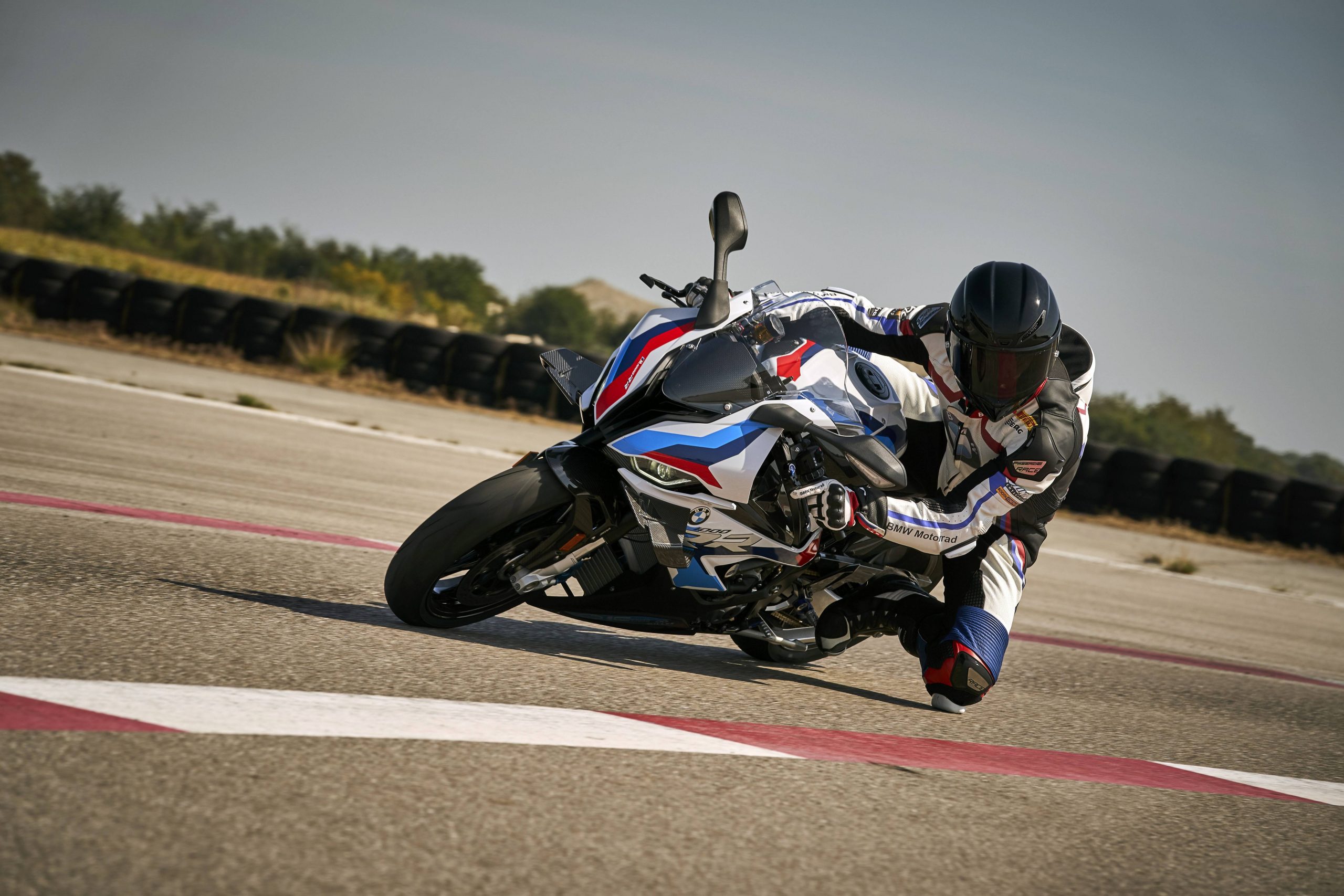

No Comment